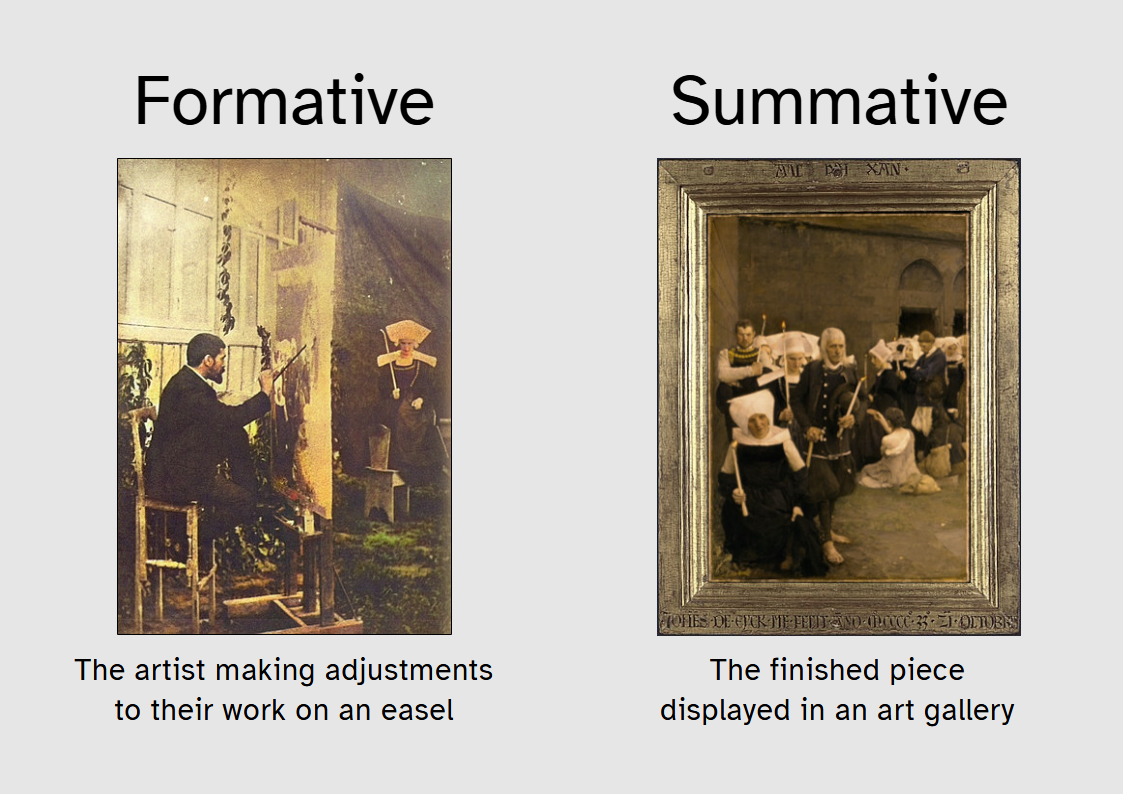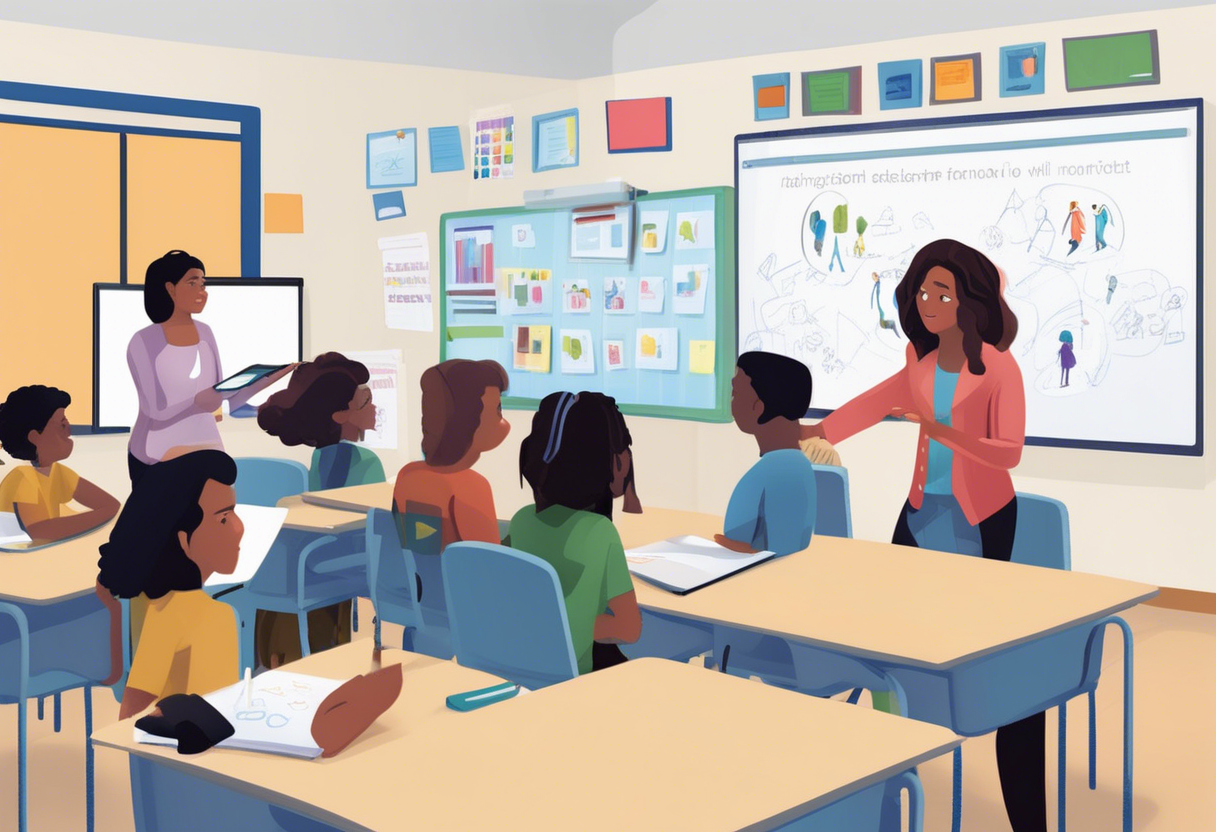
Formative assessments play a crucial role in education, shaping how students learn across all ages. These assessments can lead to a 30% boost in academic performance, which is pretty impressive, right? But what are formative assessments, and how are they different from summative ones? In this article, we'll break down what formative assessments are, how they help spot learning gaps, and share some practical ways to use them. We'll also look at how they can increase student motivation and engagement, and explore the potential of using technology and AI with them. Whether you're a teacher wanting to improve your methods or just someone curious about how learning works, this guide will show you how formative assessments can make a big difference in student success. Let's dive in!
Summary: Dieser Artikel beschreibt die Definition und Unterscheidung von formativen Bewertungen sowie deren Rolle bei der Identifizierung von Lernlücken. Er bietet praktische Strategien zur Implementierung und untersucht den Einfluss auf die Schüler*innenmotivation und -engagement, einschließlich der Integration von Technologie und KI.
Definition and Distinction of Formative Assessments
Formative vs. Summative Assessments Explained
Formative assessments are all about the journey. They're ongoing and provide feedback that aids both teachers and students in improving as they progress. Unlike summative assessments, which occur at the end of a course to evaluate what students have learned, formative assessments are integrated throughout the learning process. They emphasize learning and growth, not just the final grade.
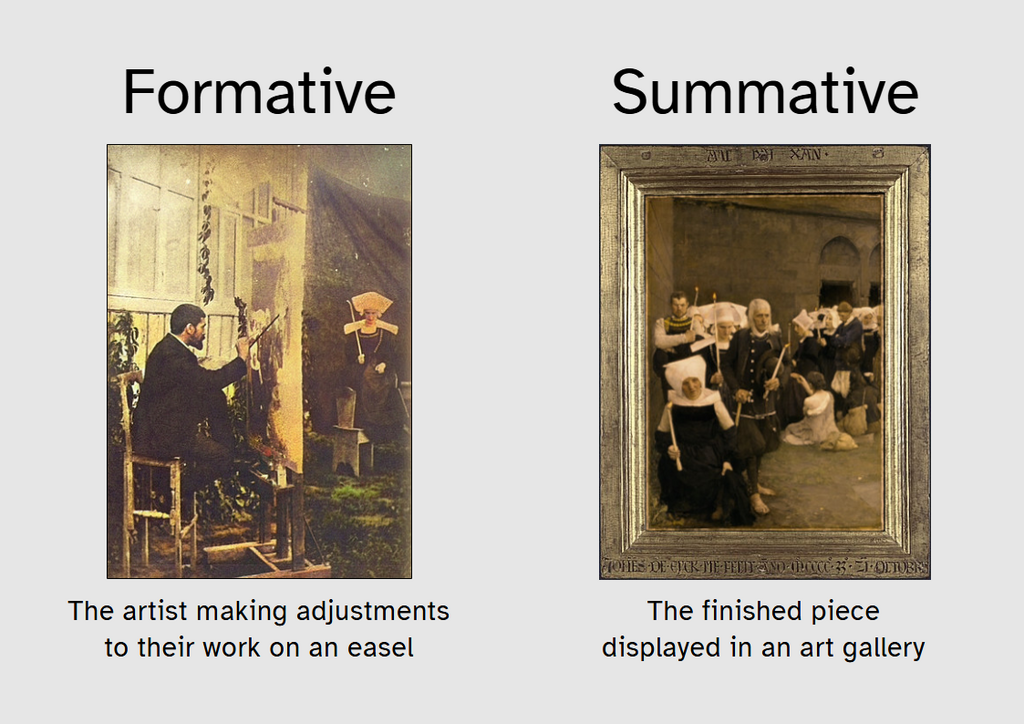
Summative assessments, such as final exams or major projects, assess how much students have learned by the end. These typically come with grades or scores and carry significant weight. In contrast, formative assessments are designed to assist students in learning over time. They focus less on grades and more on identifying areas where students may need support, allowing teachers to intervene and provide assistance.
Key Characteristics of Formative Assessments
Formative assessments are continuous and aim to enhance student learning. They involve collaboration between teachers and students to gauge student comprehension. This dynamic allows teachers to adjust their teaching strategies and encourages students to take ownership of their learning. These assessments can be informal, like class discussions, or more structured, like quizzes, seamlessly integrating into everyday lessons.
Informal and Flexible Formative Techniques
A major advantage of formative assessments is their flexibility. Teachers can adapt them to suit their students and the subject matter. This adaptability allows for tailored feedback and instructional adjustments to meet each student's unique needs.
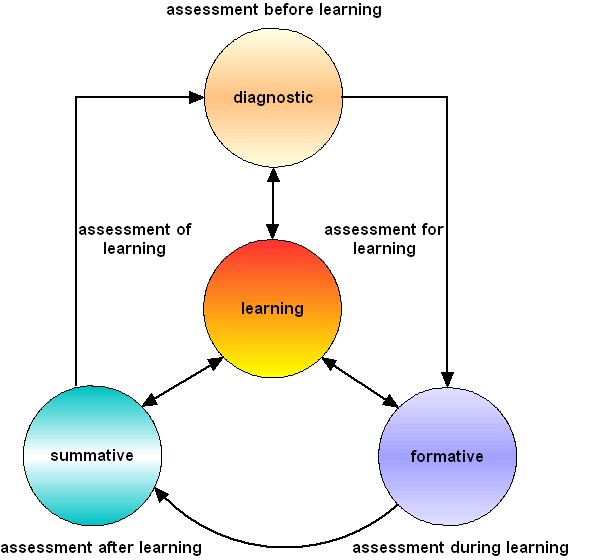
Importance of Feedback in Formative Assessments
Feedback is crucial in formative assessments. It is prompt and actionable, helping students understand their current standing, set goals, and determine next steps. Effective feedback also enables teachers to modify their approach as necessary.
Student-Centric Formative Approaches
Formative assessments place students at the forefront. They focus on individual learning styles and encourage students to be active and self-aware participants in their education. By involving students in self-assessment, these assessments empower them to take control of their own learning journey.
Formative Assessments: Identifying Learning Gaps
Discovering Misconceptions with Formative Assessments
Formative assessments are crucial for identifying where students might be confused or falling behind. These assessments employ both informal and formal methods, providing ongoing feedback that helps students and teachers pinpoint problem areas. Unlike summative assessments, which occur at the end of a course, formative assessments aim to enhance learning as it unfolds. They foster a low-pressure environment, encouraging students to experiment and grow.
Common methods include:
- In-class quizzes
- Interactive chats
- Observations
- Questions and written work
Tools like Kahoot! and Quizizz offer immediate feedback, highlighting areas where students need additional support. Diagnostic tests provide a comprehensive understanding of a student's knowledge before introducing new topics, enabling teachers to tailor their instruction. For instance, Google Forms allows for the creation of custom assessments that automatically analyze results, simplifying the identification of misunderstandings.

Formative assessments are not just one-time tests. They represent an ongoing dialogue between teachers and students, capturing learning data to guide instruction and support. This process helps students become self-directed learners by involving them in goal-setting and self-evaluation.
Enhancing Teacher-Student Collaboration with Formative Practices
For formative assessment to be effective, the classroom must foster collaboration and respect. Both teachers and students play active roles in the assessment process, providing feedback that helps refine teaching to better meet students' needs. This ongoing dialogue promotes continuous improvement and support, enhancing the learning experience for everyone involved.
Tools such as Padlet and Flipgrid facilitate open sharing of thoughts and feedback. Regular feedback sessions allow students to discuss results with teachers, express concerns, and receive personalized advice. Platforms like Microsoft Teams maintain communication, ensuring continuous support.
Group projects and discussions further enhance the formative assessment process, fostering a supportive classroom community and improving academic outcomes.
Practical Strategies for Implementing Formative Assessments
Effective Formative Assessment Techniques
Formative assessments are crucial for providing ongoing feedback that benefits both teachers and students. To maximize their effectiveness, teachers need to set clear and specific goals. These goals clarify expectations and help students track their progress over time source.

Diverse Formative Assessment Methods
Incorporating various assessment methods addresses different learning styles and keeps students engaged. Techniques such as:
- Quizzes
- Peer feedback
- Self-assessments
- Exit tickets
- Think-pair-share
- Journal jotting
actively involve students and maintain their interest source.
Regular and Specific Feedback in Formative Assessments
Providing consistent and detailed feedback is essential for motivating students and enhancing their learning strategies source.
Collaborative and Reflective Formative Methods
Methods like think-pair-share and Socratic seminars enhance critical thinking and communication skills source. Exit tickets encourage reflection and question formulation source.
Digital Tools for Formative Assessment Tracking
Utilizing digital platforms such as Kahoot for quick polls, Google Classroom or Flipgrid for online discussions, and digital portfolios like Seesaw aids in tracking student progress source.
Overcoming Challenges in Formative Assessment
Aligning Formative Assessments with Learning Goals
A significant challenge is ensuring formative assessments align with learning objectives. Misalignment can obscure actual progress source.
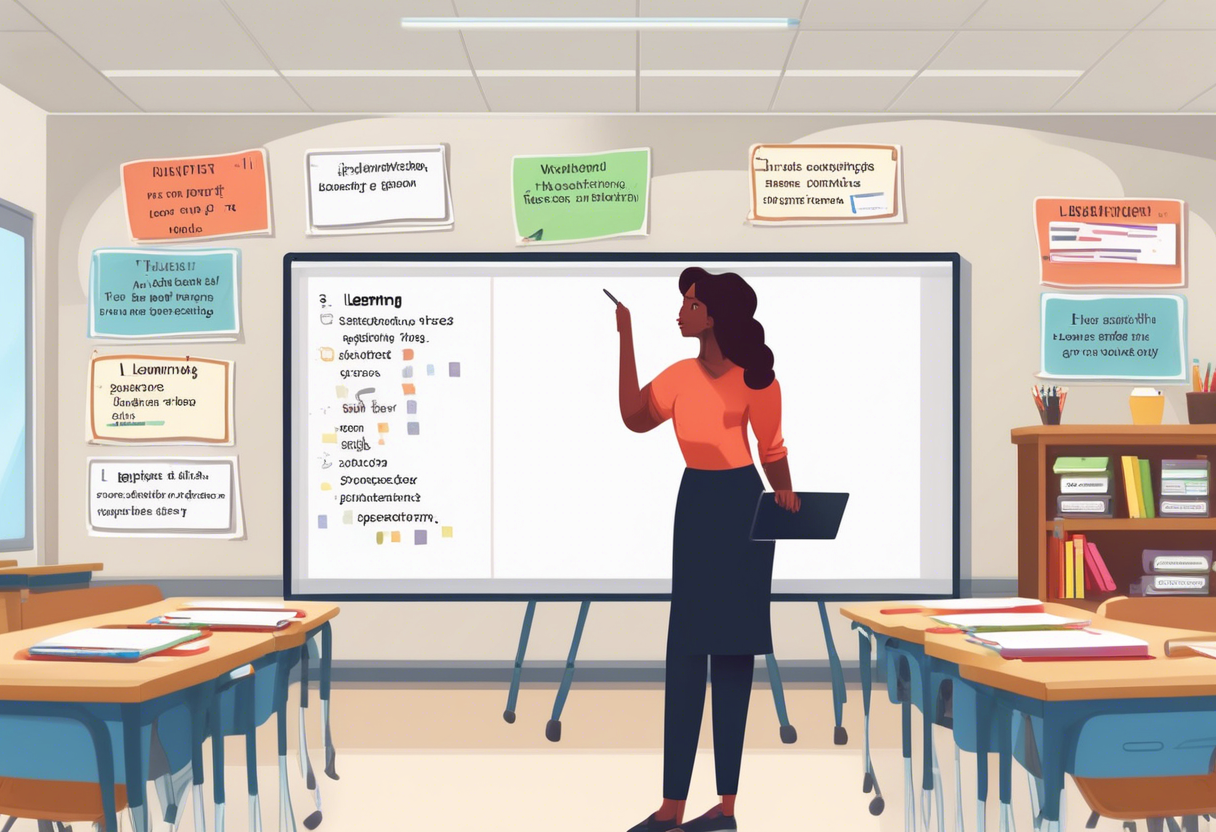
Enhancing Student Engagement in Formative Assessments
Maintaining student engagement can be difficult. Employing diverse methods and technology can enhance interest and participation source.
Providing Timely Feedback in Formative Assessments
Providing prompt feedback is vital yet time-consuming. Digital tools can streamline and expedite this process source.
Interpreting Formative Assessment Data
Interpreting data from assessments can be challenging. Online tools that analyze results can assist teachers in making informed instructional decisions source.
Supporting Diverse Learners with Formative Assessments
Assisting diverse learners, such as English Language Learners, requires flexible assessment formats. Options like verbal or visual responses accommodate various expression methods source.
The Impact of Formative Assessments on Student Motivation and Engagement
Formative Assessments: Emotional and Motivational Benefits
Formative assessments are instrumental in enhancing student learning by identifying areas where they may struggle or misunderstand concepts. These assessments focus on improvement rather than final grades, empowering students to take charge of their learning journey.
By reducing the pressure typically associated with high-stakes testing, formative assessments foster a growth-oriented mindset, making students more enthusiastic about learning. The collaborative environment between teachers and students, built on feedback, nurtures a respectful and cooperative classroom atmosphere.
Quick feedback is crucial, as it highlights students' strengths and areas for improvement, thereby boosting their confidence. For instance, a teacher might employ quick quizzes or pose questions during class to provide immediate feedback. This approach helps students recognize their knowledge gaps and motivates them to learn more effectively.
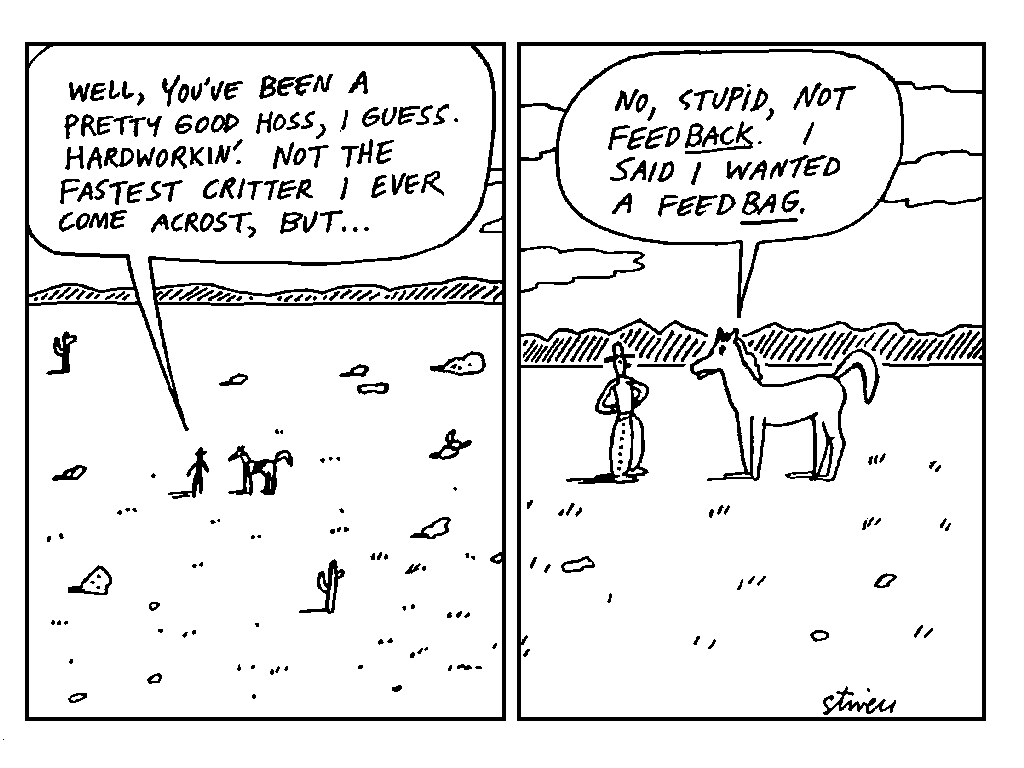
Formative Assessments: Boosting Student Engagement
Formative assessments play a vital role in maintaining student engagement. They enable teachers to gauge student progress and tailor lessons to meet individual needs. Techniques such as mini whiteboard responses or group discussions actively involve students in the learning process.
This continuous feedback loop encourages participation by allowing students to track their progress and understand the value of their contributions. Additionally, it helps teachers identify students who may require extra assistance, allowing for timely intervention to prevent frustration or confusion.
For example, in a math class, a teacher might ask students to display their answers on mini whiteboards. This method allows the teacher to quickly assess comprehension and adjust the lesson to ensure all students remain engaged and on track.
Formative assessments not only boost motivation by creating a supportive environment that emphasizes growth and improvement but also enhance engagement through adaptive teaching strategies. For more insights, explore formative assessment and its benefits on the University of Liverpool Centre for Innovation in Education.
Integrating Technology and AI in Formative Assessments
Enhancing Formative Assessments with Technology
Technology plays a pivotal role in enhancing formative assessments. It facilitates data collection and provides immediate feedback, enabling educators to identify and address misunderstandings and learning gaps promptly.
Real-Time Tools:
- Quizzes
- Polls
- Mini whiteboards
These tools allow teachers to monitor student progress in real-time. For example, students can participate in quizzes on digital platforms during class, providing teachers with instant results to adjust their teaching methods on the fly. This approach fosters a personalized learning experience, as educators can tailor lessons based on immediate feedback.
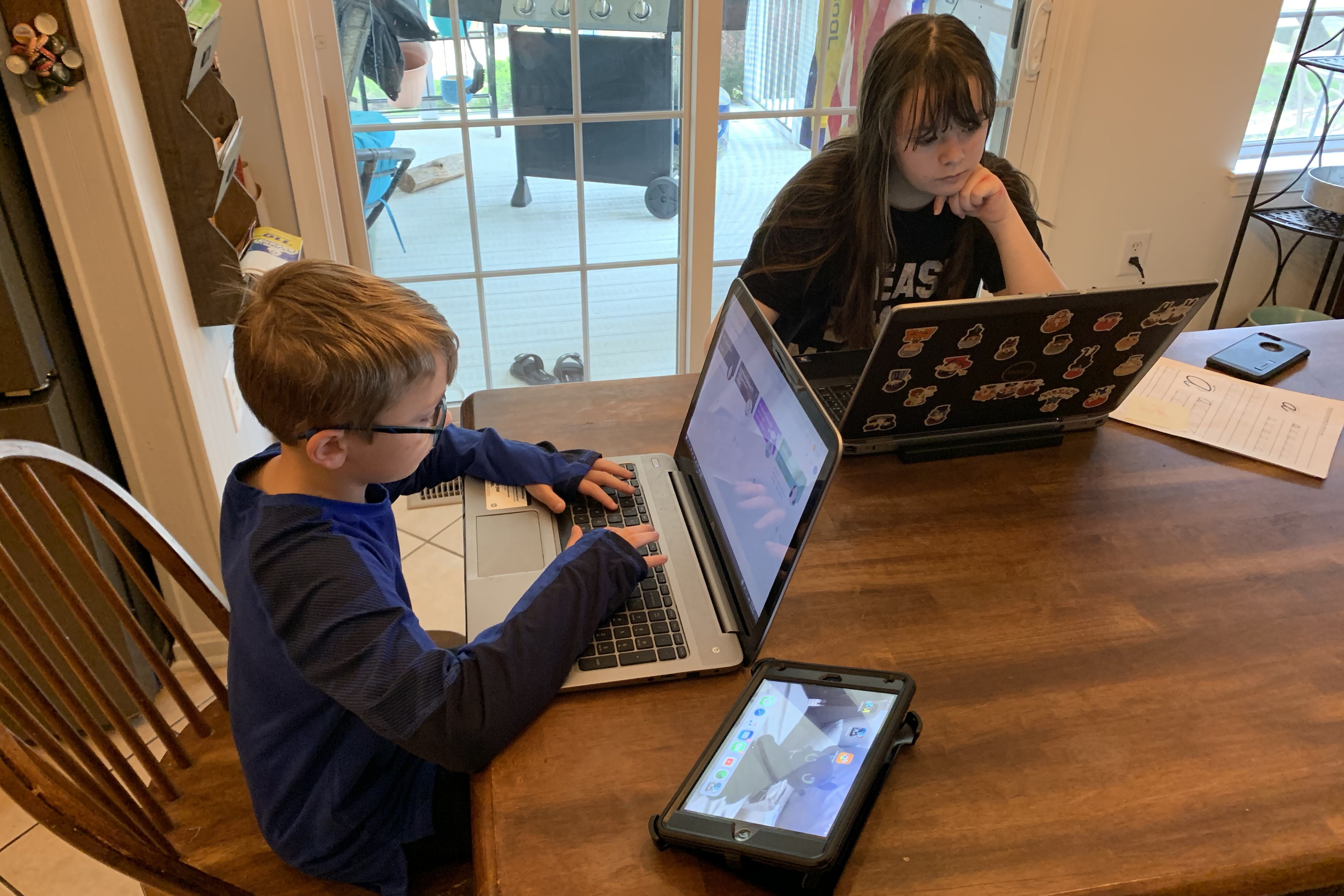
By transforming assessments into an ongoing dialogue rather than a one-time test, students gain greater independence in their learning journey. They become aware of their current standing and understand what areas require improvement.
AI-Driven Platforms in Formative Assessments
AI-driven platforms are revolutionizing formative assessments by analyzing student responses instantaneously and delivering personalized feedback. This approach is more effective in identifying learning gaps compared to traditional methods.
Key AI Tools:
These platforms simplify the creation of quizzes, the formulation of adaptive questions, and the provision of immediate feedback. AI technology can modify questions and resources based on student performance, offering a tailored learning experience.

Future Prospects:
Looking ahead, AI might collaborate with learning analytics to predict student performance and offer interventions before struggles arise. AI could enhance assessments by incorporating cognitive, emotional, and behavioral data, providing a comprehensive view of student learning.
This advancement empowers students to take control of their learning through prompt, actionable feedback that encourages reflection and self-assessment. As AI continues to evolve, it will increasingly contribute to making assessments more engaging and personalized, presenting educators with innovative methods to enhance teaching and learning.
FAQs
Integrating Formative Assessments in Online Learning Environments
Bringing formative assessments into online learning is easier than you might think, thanks to some handy tools and strategies. Learning Management Systems (LMS) like Moodle or Canvas have features for quizzes, polls, and instant feedback. These tools let teachers create assessments that give quick insights into how students are doing.
Beyond LMS, platforms like Kahoot! and Quizlet turn typical assessments into fun, game-like activities. They're great for real-time feedback and can help check understanding during live online classes. Tools like Padlet or Peergrade support discussion boards and peer reviews, promoting ongoing assessment and reflection in virtual classrooms.
Adaptive learning tech takes it further by personalizing experiences based on student performance. Platforms like Edpuzzle or Google Classroom offer insights into how students are doing, helping teachers tweak their strategies to fit individual needs better.
Common Misconceptions About Formative Assessments
People often think formative assessments are just informal or low-stakes. Some educators might see them as simple quizzes or tests. But really, they include a variety of activities like discussions, projects, and interactive tasks that keep the feedback flowing between students and teachers (FasterCapital).
Another myth is that formative assessments are only for grading. They're actually meant to guide teaching and support learning progress (EdWeek). Some teachers also worry they're too time-consuming and add more work. But if you use them right, they can actually make teaching smoother by spotting learning gaps early, which saves time later (Edutopia).
Impact of Formative Assessments on Student Engagement and Motivation
Formative assessments play a big role in keeping students engaged and motivated. They offer timely feedback, helping students see their progress and areas to improve. This kind of feedback encourages a growth mindset and boosts motivation (Frontiers in Education). When students look at learning as an ongoing journey with clear goals, these assessments make learning feel more relevant and personalized (Tandfonline).
Including self-assessment and peer-assessment in formative practices helps students take charge of their learning and boosts intrinsic motivation (ScienceDirect). Students using these tools often feel more in control and are more likely to stick with challenging tasks. This sense of empowerment leads to better learning outcomes and a deeper understanding of the subject.
